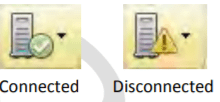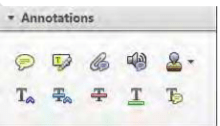
How to Conduct Meta-Analysis and Analysis Data
November 18, 2021
A Research study writing a Systematic Review in Clinical Investigation
December 17, 2021Online proofing
Proofing has been practised since the invention of the printing press, if not before. Before proceeding with the complete print run, a prepress proof was utilised to gain final approvals from various stakeholders. With the introduction of computers and monitors, the emphasis changed from “hard evidence” to the much less expensive and simpler “soft proof.” Since the days of moveable type in the Gutenberg era, creative technology and our ways of working have evolved tremendously, both in terms of the material that need proofreading services and how we handle workflows and collaborative logistics.

Introduction
Proof reviewers can use the Online Proofing System to look at PDF proofs, make errors, reply to questions, upload substitute figures, and submit changes straight from the locally saved PDF proof (1).
- Make sure you’re joined to the internet before evaluating your proof in the Online Proofing System. The PDF proof will be able to connect to the central Online Proofing System server due to this. You should see a green checkmark icon above the yellow banner if you are connected to the Online Proofing System server .

- Please examine the article proof on the next pages and use the Annotation Tools provided on the next two pages to mark any corrections, revisions, or review replies.

- You may save your proof corrections by clicking the “publish comments” button on the yellow banner above. Corrections do not have to be made all at once. Before clicking the “complete proof review” button below, you may publish comments and then log back in to add and publish more comments .

- If you need to provide extra or replacement files that are larger than 5 Megabytes (MB), please use the upload file option instead of attaching them directly to the PDF Proof.

- Please click the “complete proof review” button below after your proof review is complete, and all revisions have been submitted to the server by clicking the “publish comments” button.
What is HTML?
To distribute knowledge globally, one requires a universally recognised language, a publishing mother tongue that all computers might comprehend. HTML is the publishing verbal(BK1) of the World Wide Web (from Hyper Text Mark-up Language).
HTML gives authors the means to:
- Create online documents that include headers, text, tables, lists, pictures, and more.
- At the touch of a key, you may access internet information via hypertext links.
- Create forms for searching for information, making reservations, ordering items, and other transactions with distant services.
- Spreadsheets, video clips, music clips, and other applications may be included in their papers directly.
A brief history of HTML
HTML has been enhanced in a variety of ways throughout the years. Tim Berners-Lee created HTML while working at CERN, and the Mosaic browser built at NCSA popularised it. It exploded in popularity throughout the 1990s, thanks to the rapid expansion of the internet. The internet relies on Web page writers and providers adhering to the same HTML standards. This has generated collaboration on HTML standards.
The majority of individuals believe that HTML publications should be compatible with a variety of browsers and systems. Because content suppliers only have to produce one version of a document, achieving interoperability lowers costs. If the effort is not undertaken, the Web is more likely to develop into a proprietary world of incompatible formats, limiting the Web’s commercial potential for all participants. Each version of HTML has wanted to represent increasing industry consensus so that content providers’ investments are not spent. Their publications submit are not rendered illegible in a short period.
HTML was created with the idea that content on the Web should be accessible to a wide range of devices, including PCs with various graphical displays and colour depths, cellular phones, handheld devices, speech output and input devices, machines with high or low bandwidth, and so on(2).
A Record for the Author
To provide the author with a record of the changes made to the article because all modifications are done online through an HTML interface. Authors may not trust that their revisions were correctly communicated to the editing offices if they don’t record their changes. We utilise XSL-FO to build a PDF of the article’s tracked-changes view (figure 1). Because there is no widget to provide a context in the PDF, the modifications are shown differently than in the article editor. Rejected text insertions, for example, are not visible in the PDF instead of being displayed as deletions as they are in the editor (3).
Figure.1 The author-corrected PDF. The display of the changes is a bit different than in the article editor.

Track changes
The Proof Express track changes system retains track of text changes such as insertions, deletions, and formatting. It possesses track of structural changes, such as when a header or section is promoted or demoted and when text is converted to a list. It does not, however, have a track of changes to attribute values like @id and @rid. This absence is because certain values are not directly adjustable by the user.These values can be changed, but only with the help of one of Proof Express’s structured editing tools . It is the system’s job to guarantee that the right @rid value is applied whenever a user, for example, modifies a reference citation to point to reference six instead of reference 5. (However, the user will notice a change in the citation’s visible text.) In short, Proof Express’s change-tracking functionality is an editorial tool for analysing text changes made by writers and other users, not a diagnostic tool for monitoring the system’s correct operation(4).
Pubirca Experts rewrite your manuscript by retaining its context and meaning. Ensure you perform a plagiarism check (plag checks in short) to pre-empt copyright violations.
About Pubrica
Pubrica meets summit standards and protocols of journal publishing ethics in every single phase of services and processes. Pubrica adheres to authorship guidelines drafted by the International Council of Medical Journal Editors (ICJME), and the scope for services will be routinely updated as per the Committee of Publication Ethics (COPE) and International Society of Medical Publication Professionals guidelines (ISMPP).
References
- Disconnected, Connected. “Online Proofing System Instructions.” Medical Education 49.11: 1153-1154.
- Raggett, Dave, Arnaud Le Hors, and Ian Jacobs. “HTML 4.01 Specification.” W3C recommendation 24 (1999).
- O’Connor, Charles, Antony Gnanapiragasam, and Michael Hepp. “Tracking Changes to JATS XML in an Online Proofing System.” Journal Article Tag Suite Conference (JATS-Con) Proceedings 2013 [Internet]. National Center for Biotechnology Information (US), 2012.
- O’Connor, Charles W., and Bert Willems. “Change Tracking in the XML-Based LiXuid Production Workflow Using Fonto’s Document History.” Journal Article Tag Suite Conference (JATS-Con) Proceedings 2020/2021 [Internet]. National Center for Biotechnology Information (US), 2021.
